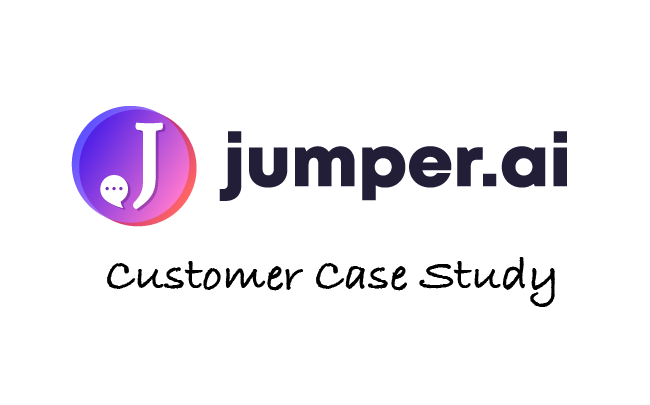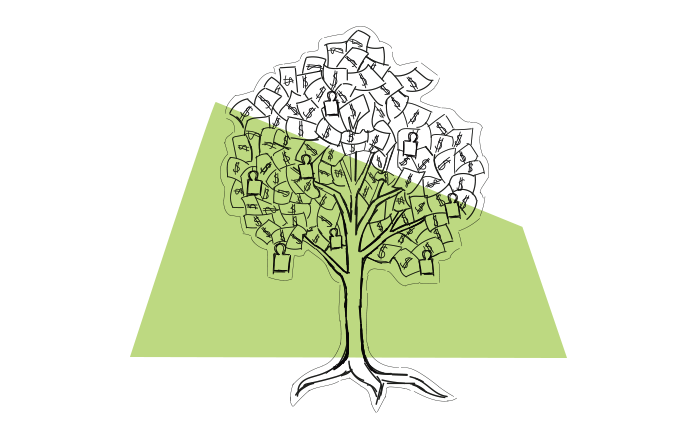Is there a proven formula to grow a company into a million-dollar business? I’m afraid not. But simply learning from the best players and replicating their strategies can get you on the right track.
Today on the blog, I give the floor to Larry Kim. As a founding father of two thriving companies, Larry has hands-on experience on how to grow a startup into a company worth millions. He founded MobileMonkey, the world’s best free chatbot builder and integrated chat marketing platform for SMS, Web Chat, and Facebook Messenger. He’s also the founder of WordStream, Inc., the leading provider of Google Ads, Facebook Ads, and keyword tools used by over a million marketers worldwide.
I asked Larry to share some of his tips on sales and marketing that proved effective for him, and which you can also implement in your SaaS startup to accelerate its growth.
Cold email personalization
Woodpecker: You obviously know a lot about PPC ads and I saw your webinar on personalizing PPC campaigns, does this kind of knowledge bleed into other marketing areas, like cold email personalization?
Larry Kim: The ways PPC and email are the same apply to all marketing channels.
Don’t overlook intent signals. You have to be able to infer that an audience is a good fit for your offer. For PPC, that intent is signaled by a search keyword. For cold email, that intent might be news that a company has closed a big fundraising round, change in management, job title, and similar things.
Fix boring ad headlines and email subject lines! Use irresistibly clickable headlines — whether that’s through stand-out copy or personalization — to get people to your site.
Make unicorn babies. Find your unicorn campaigns (the top 5% of pages responsible for 80% of results) and do more of that rather than trying something new and unproven.
Creating marketing opportunities
W: I’m really impressed with the volume of interviews, presentations, and keynotes you’re doing. How do you plan all those things? Do you set them up yourself or people approach you, if anything, what convinces you to take part in it or reach out to hosts?
LK: Unfortunately, marketing doesn’t happen by itself.
Our marketing team is actively working with partners and publishers to create opportunities, events, campaigns, and content.
And that kind of snowballs so the more you put yourself out there the more you’re approached by potential new partners and journalists.
One time I rode the fake news wave to bring to light the real-world consequences of fake news to influence mainstream media and politics.
I made a fake news website and propagated fake news via Facebook ads and it was scary effective.
Since this happened, Facebook has put in place measures to mitigate this effect.
From this experiment, I was invited to be a guest on all kinds of major press outlets from CNN to Al Jazeera.
Recipe for cold emails that bring leads
W: Our audience members use email as a medium for getting press, mentions, and links. Could you share some tips on what to write in an email and how to target it to maximize one’s efforts? (We’ve read about your Unicorn Filter Effect – could you explain what it is in a few words for those who never heard about it?)
LK: Cold emailing is one of my favorite growth hacks.
Inbound marketing is like going fishing and waiting for the fish to come to you. Intent-aware outbound marketing through cold emailing is like going to where the fish are.
Use intent signals to increase engagement — anything that will spark recognition and relevance in your audience.
Personalize your emails, especially the subject line.
The quality of your list is a cornerstone for how successful your campaigns will be so use the right tool when procuring your list. The right tool will provide you with prospects that match the characteristics of your best leads.
We use Leadpresso and are really excited about the new Woodpecker API integration to Leadpresso’s prospecting tools.
Building B2B relationships
W: What about B2B relationships? What’s your strategy for boosting your relationships with prospective customers in B2B?
LK: With B2B buying cycles getting longer, marketers should provide prospective customers with a continual drip of value.
That value should include listening to how prospects engage with messaging.
Ask, does their interaction with this message help me understand what they need better?
Woodpecker helps us with this strategy with engagement-based If-campaigns.
Use engagement metrics and insights to segment the audience. Ultimately marketers can create more relevant offers and content and develop credibility and trust.
Connect with prospective B2B customers in multiple high-engagement channels.
Along with email marketing, we use chat marketing to stay connected to leads and customers in real-time, interactive messaging.
The more channels where you can connect, the better a brand’s odds of reaching B2B prospects when they’re looking for your solution.
The importance of social media in B2B
W: You’re active on social media platforms, could you share some tips on how entrepreneurs like you can use social media to build strong B2B connections?
LK: It’s notoriously hard to quantify the ROI of social media marketing.
But I will say that social media visibility has led to some amazing opportunities for me and my businesses including mainstream media interviews.
Social media has also played a role in countless opportunities for fundraising and networking.
I share a bunch of my kooky organic social media hacks here.
The role of chat bots in sales & marketing
W: Now, you’ve founded another company – MobileMonkey, a messenger bot. We wrote an article about conversational marketing, in which we asked experts about increasing sales via chats, what’s your stance on that? Could you tell us why you built MobileMonkey and what does the future hold for you?
LK: I started MobileMonkey because customer communication via messaging is 10x more engaging than any other channel.
We use messaging more than social media yet less than 1% of businesses are equipped to automatically stay in touch with customers in messaging.
Customers would rather use messaging than channels like phone or web updates to stay connected with service providers for everything from making purchases to customer service.
We want to make the easiest, most intuitive messaging platform to automate marketing, sales, and customer service.
We made a breakthrough last year when we launched OmniChat. OmniChat unifies campaigns, automations, and conversations happening across multiple messaging apps into one platform.
The conversations marketers write to automate lead gen, conversion, and customer support work simultaneously across Facebook Messenger, SMS and native web chat. It leads to big efficiencies and the ability to scale reach.
We’re adding support for WhatsApp, Instagram, and iMessage later this year as APIs become available.
W: We’ve read on Critical Mention that you believe “Individual messaging” is a marketing aspect that stands the test of time. What are your tips to use that kind of marketing channel effectively?
LK: Here are three tips for launching a chat marketing program that will immediately become one of your top-performing channels.
1. Install web chat on your website. This might sound obvious to get started with messaging.
Use custom page-specific icebreakers to increase the number of inquiries.
Instead of a generic webchat greeting: “Hi, can I help you?” use an ice breaker like
- Do you want to see if you qualify for SPECIAL pricing?
- Would you like help in finding the right-size [product]?
- Are you looking for a rental apartment, buying a home or condo, or selling your property?
- Would you mind telling us about your customer experience today?
2. Set up push notifications to alert your team when a user is deemed super important or urgent.
You don’t need to be notified of every conversation. But you do want to know when a super valuable lead is talking to your business.
Set up a notification that sends as a push notification to a mobile app, a browser notification on desktop, or an email that sends when someone indicates they’re a super valuable lead for your business.
3. Reduce donkey chat sessions with menus. When you call Verizon, you aren’t automatically connected to a live agent.
You navigate a phone tree to direct you to the help or information you need.
Use chat menus to help users navigate to the info they need. About 50% of the time, you can automate FAQs and solve their problem without human intervention.
You can read my top 7 chat marketing tactics here.
3 top SaaS growth tips
W: What would be your 3 top tips for anyone who wants to grow a SaaS product like MobileMonkey?
1. Be Somewhat Delusional
Don’t just think big, think delusional. There’s tremendous power in purposely projecting a somewhat crazy plan or proposal.
It paints your whole project with a powerful unicorn filter effect and ends up bringing you employees, partners and investors that truly believe in your vision.
99 percent of investors will say it’s not possible. But one percent of people will look at the plan and be inspired. And those are the people who can turn your crazy vision into a reality.
2. Find Your Unicorn Growth Hack
Most of the value you create in marketing is coming from a fraction of the campaigns.
You can find your unicorn hack by just looking at the top three percent of your existing campaigns and seeing what three percent is outperforming the rest of your campaigns.
When it comes to finding your unicorn growth hack, look to the past. It’s probably related to something that did well previously. No matter how good, or bad, your marketing is, some of it will have done slightly less poorly.
Start there, innovate there. It’ll be obvious in hindsight.
3. Make Unicorn Babies
Once you find your unicorn growth hack, work to replicate that same successful idea.
This may seem like a pretty obvious statement, but I have found that 95 percent of marketers tend to favor new, unproven ideas over older, proven ideas — and I think it’s totally the wrong way of thinking.
If something worked in the past, it will probably work again.
READ ALSO

10 Startup Growth Hacks To Generate Leads For SaaS Businesses
Generating first customers for your SaaS startup requires a lot of time. Time in the early days of any is scarce. There's so much work to be done that you don't know what to work on first. But in order to stay afloat, you need a steady flow of customers. Woodpecker got its first customers through cold emailing. Yet, there are other ways that can support the lead generation process in your company. In today's article, Deepti Jain from Aeroleads will tell you a bit about those other ways of generating leads for your startup.

What is Upselling and Cross-selling and How to Apply These Techniques in a SaaS Sales Process?
Although an e-commerce sales process greatly differs from the sales we usually cover here, I believe there are some tactics that can be taken from it and applied to your own SaaS sales process. For instance, upselling or cross-selling on the order value. Let's see how you can use e-commerce's tactic of upselling and cross-selling to boost your sales.

How SaaS for E-commerce Can Generate Leads Through Email: Jumper.ai
Positive feedback from a satisfied customer is always a huge motivator that gives us wings. Recently we had a pleasure to interview Jumper.ai team who shared their experience with Woodpecker and told us a few words about how it helped them reach new customers. Read the full story below.

